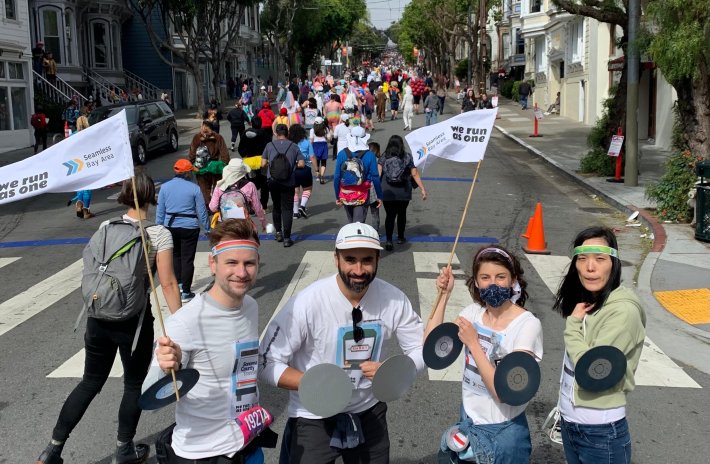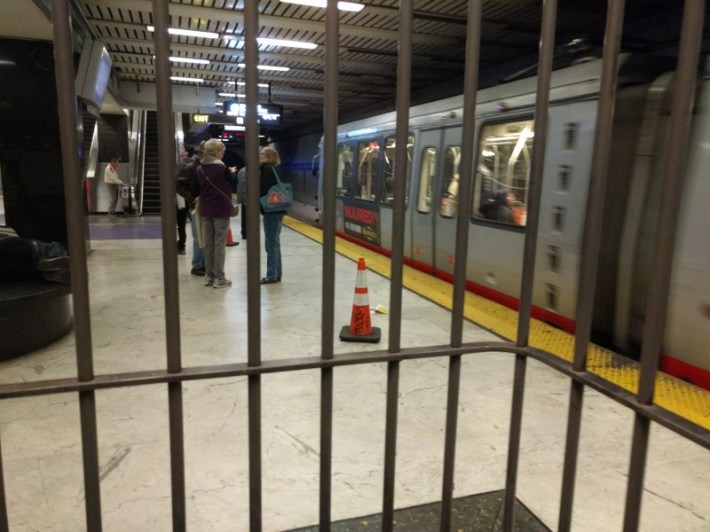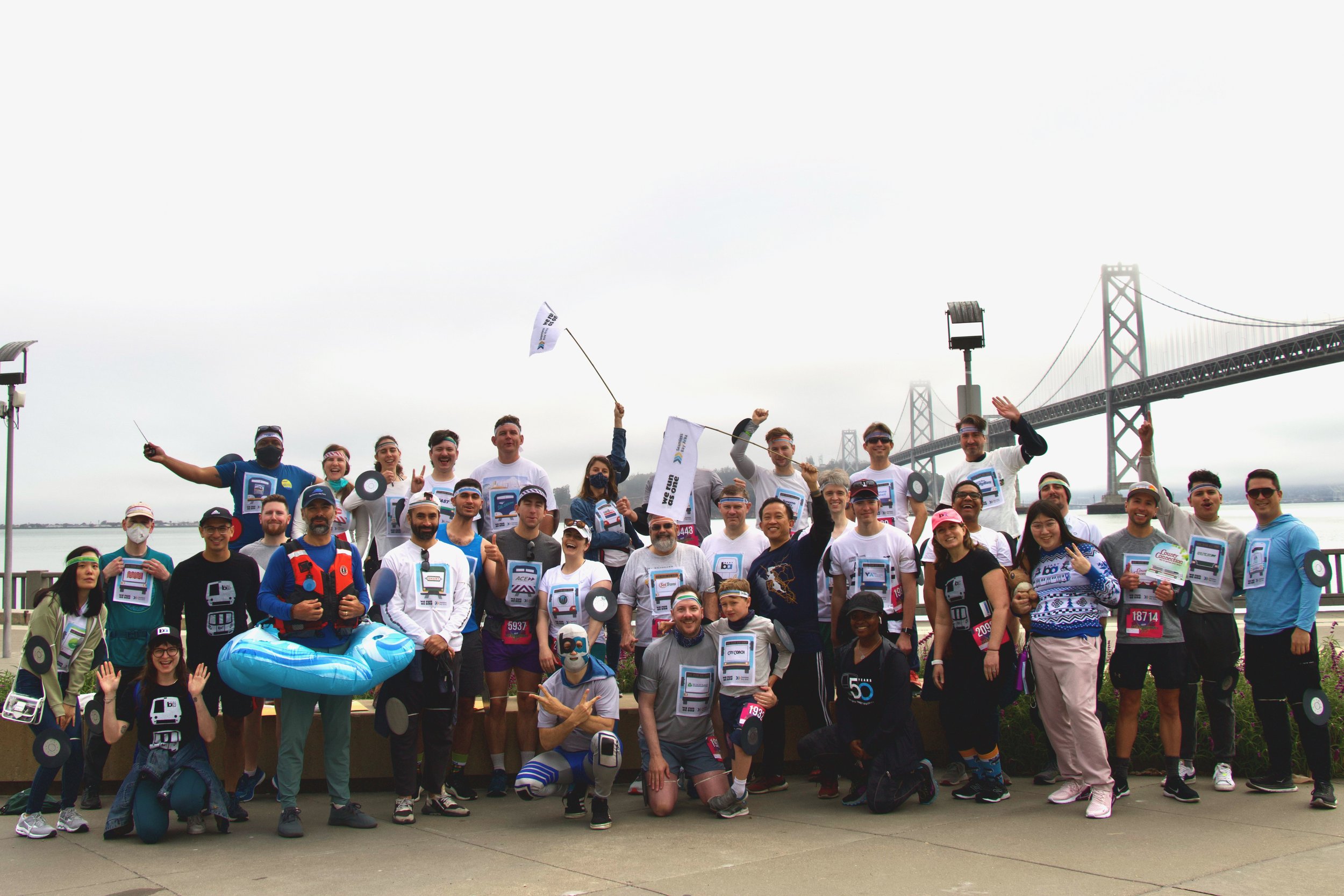Note: GJEL Accident Attorneys regularly sponsors coverage on Streetsblog San Francisco and Streetsblog California. Unless noted in the story, GJEL Accident Attorneys is not consulted for the content or editorial direction of the sponsored content.
Adorned with logos from Muni, BART, Caltrain, AC Transit, SMART, SamTrans, and over 20 other Bay Area Transit agencies, runners supporting Seamless Bay Area used Sunday's Bay to Breakers run as an opportunity to promote their vision of an integrated, rational transit system for the region. From a post from Ian Griffiths, one of the organization's founders:
The cohort, organized by Seamless Bay Area, including 27 runners dressed as each of the Bay Area’s 27 transit agencies, San Francisco City Attorney and seamless transit champion David Chiu, local LuchaLibre star BART-Man, and strong showing of BART fans and employees, including BART Chief Communications Officer Alicia Trost.
Seamless Bay Area organized the transit cohort as both a community building activity to bring together transit lovers from across the region, and as a way of building awareness about just how many transit agencies there are in the Bay Area.
Indeed, the lead image really sums up just how ridiculous it is to try and use transit across the Bay Area. There are basically no free transfers and there is no schedule coordination between the transit agencies represented above. If roads were arranged the same way, where every time someone changed freeways or entered a new city they had to buy an expensive pass and wait for anywhere from ten minutes to two hours, few people would drive outside of their districts.
Also from Griffiths's post:
While the annual race goes from San Francisco’s Ferry Building to Ocean Beach, Seamless transit cohort racers came in from across the region, including from the Peninsula, South Bay, and East Bay — many taking advantage of special early morning BART and Caltrain service set up specifically for the event.

As previously reported, Seamless is advocating for the passage of SB-917, the "Seamless Transit Transformation Act," introduced by San Mateo State Senator Josh Becker. The bill, which is co-sponsored by Seamless Bay Area, Bay Area Council, TransForm, Silicon Valley Leadership Council, and Joint Venture Silicon Valley, SB 917 sets deadlines for the implementation of policies developed by the region’s Blue Ribbon Transit Recovery Task Force to make transit rational, with scheduled transfers and integrated fares and branding. The bill calls for MTC, in consultation with transit agencies, to:
- Standardize real-time transit arrival information across all 27 operators by 2023
- Deliver key fare integration policies including free transfers by 2024
- Develop and adopt a Connected Network plan by 2024 identifying the region’s transit priority network, major regional hubs, and desired levels of service across the region to inform future planning and funding
- Develop mandatory standards for integrated signage wayfinding by 2025
Griffith's provided this update Monday on the bill as it moves through the legislature:
- On May 9th at Senate Appropriations, SB 917 was put on 'suspense', meaning the bill must be considered at a special Suspense Hearing on May 19th. Bills put on suspense are expected to have more significant costs; the purpose of the hearing is to consider potential costs the bill may incur to the state.
- If the bill makes it out of the Suspense hearing on May 19th, it will be voted on by the full Senate by the end of May, and will then be considered by various Assembly committees in June.
- This bill has no formal opposition, though transit operators are still developing proposed amendments they hope the bill author will consider, mainly focusing on the process by which decisions around fare integration - which the bill would make mandatory - would be made.
- In parallel, the governor and state legislature are refining their budget proposals, given the now even larger than anticipated budget surplus of $97 billion - advocates are working hard to build support for funding fare integration as part of the budget, to smooth the path for SB 917's passage.
To show support for the legislation, write to lawmakers via the state's position letter portal.

Meanwhile, heads of eleven of the transit agencies, including SFMTA's Jeffrey Tumlin, BART's Robert Powers, Caltrain's Michelle Bouchard, and VTA's Carolyn Gonot, co-signed a letter to Becker, politely pleading to retain control of budgeting and fares. "Local service is and should be responsive to the local community needs and not set to a regional standard," they added.





